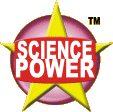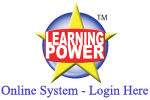Physics Topic and Lesson List - Disc 8 of 15
| Disc 8 - Direct current circuits. |
| Topic |
Lesson Name |
| What is the nature of the flow of current? |
- Under what conditions does ordered movement of charges take place?
- In what direction does current flow?
- The intensity of current
|
| Sources of, and devices receiving, electrical energy |
- Power plants
- What is electrical energy changed into?
- Chemical effects of the flow of an electric current
- Magnetic results of the flow of electric current
|
| Cells as tools creating voltage |
- Cells
- The Leclanche cell
- The electromotive force of a cell
- Sources of EMF as pumps - a hydrodynamic analogy
- Accumulators
|
| Electric circuits |
- The components of an electric circuit
- What sustains the movement of electrons?
- Consolidation
|
| Ohm's law |
- What is the relationship between intensity of current and electrical tension? (Voltage)
- The resistance of conductors
|
| What the resistance of conductors depends on |
- The internal structure of metals
- What is the nature of the flow of current in metals?
- What does the resistance of a conductor depend on?
- The variable rheostat
|
| Ways of connecting electrical energy receiving devices |
- Ways of connecting electrical energy receiving devices
- Serial connection of resistors
- Characteristics of electrical energy receiving devices connected in parallel
- The total resistance of a parallel connection
- The advantages of connecting electrical energy receiving devices in parallel
- Fuses
- The flow of current through junctions in the circuit
|
| Transformations of energy in electric circuits |
- Transformations of energy in electric circuits
- The work of electric current
- The cost of using electrical energy
- Consolidation
|
| The power of current |
- The power of current
- The amount of work done during one time unit
- The power of a bulb
- Saving energy
- The weekly energy consumption of household appliances
|
| Current in liquids and gases |
- Current in liquids and gases
- Electrolytes
- The flow of current through an electrolyte
- Gas ions
- Thunderstorms
|
Back to Samples Page
|


